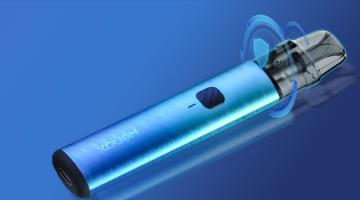Vape Quitting Timeline: Understanding the Journey

Quitting vaping, much like quitting any form of nicotine, is a journey that varies from person to person. However, understanding the general timeline of what your body goes through can help prepare you for the road ahead. This article will guide you through the stages of quitting vaping, from the immediate hours and days to the weeks and months that follow.
Nicotine is the primary substance in cigarettes, other tobacco forms, and vaping that makes them addictive. Over time, a smoker’s body and brain get used to having nicotine as it causes the release of extra serotonin and dopamine in their brain. Roughly 80−90% of people who smoke regularly become addicted to nicotine. When you stop smoking, your body has to manage not having nicotine which is called withdrawal. Withdrawal can be uncomfortable.
The First 72 Hours
The initial 72 hours are often the most challenging part of quitting vaping. This is when the body starts to react to the absence of nicotine, leading to vaping withdrawal symptoms. According to Allen Carr's Easyway, within the first 8 hours of quitting, the carbon monoxide levels in your blood will reduce by half, and oxygen levels will return to normal. In the first 48 hours, your body begins to clear out the mucus in your lungs. By the third day, your breathing will become easier, and your energy levels will increase.
During these earliest hours, the symptoms of nicotine withdrawal will start with cravings for a cigarette, followed by anxiety, and you will begin to get irritation and anger, and a decrease in mental function causing attention problems and difficulty in completing some tasks. These symptoms will start at 30 minutes after smoking and continue to rise in intensity as time goes on.
Most of the withdrawal symptoms will peak around three days after quitting. You may experience headaches, nausea, and cramps, but the good news is things will begin to taper off after day three as the body starts to clear itself of nicotine.
The First Two Weeks
The first two weeks are a critical period in the vape quitting timeline. This is when physical withdrawal symptoms are at their peak. As per Vaping Vibe, some of the symptoms you might experience include cravings for nicotine, mood swings, difficulty concentrating, and increased appetite. It's important to remember that these symptoms are temporary and will lessen over time.
During the first week, the body is adjusting after the continuous nicotine exposure. Withdrawal symptoms can start as early as 30 minutes after smoking that last cigarette. Up to the end of this first week, you are through the short-term effects and days 5-8 will begin to see circulation and breathing will improve. Craving episodes will still occur three times per day.
The First Three Months
The first three months mark significant progress in your journey to quit vaping. During this period, your body continues to adjust to the absence of nicotine. You may still experience cravings, but they will likely be less intense and less frequent. According to Allen Carr's Easyway, after 3 days, your breathing becomes easier, and your energy levels increase. After 2 to 12 weeks, your circulation improves, making physical activity like walking and running easier.
The first week produces the majority of withdrawal symptoms. As the symptoms start to fade away over the following weeks, you’ll see an increase in lung function, circulation will continue to improve, and insulin levels will normalize. Along with these improvements, the withdrawal symptoms will begin to subside.
Beyond Three Months

After the three-month mark, the physical withdrawal symptoms should largely subside. However, psychological cravings can still occur, especially during periods of stress or when in social situations where others are vaping. It's important to develop strategies to handle these situations and maintain your commitment to staying vape-free.
Getting through the first month is the most significant achievement, many of the withdrawal symptoms will have subsided, and you can congratulate yourself on reaching this massive milestone. Cravings will now be reduced, and the emotional and physical symptoms have gone past the peak. There is still no time to relax, even though physical and mental symptoms of withdrawal have pacified there is always the possibility of relapse which happens to smokers years after having their last cigarette. It’s key to remember the last month after quitting regarding the discomfort you went through to remind yourself of the experience.
After the three-month mark, the physical withdrawal symptoms should largely subside. However, psychological cravings can still occur, especially during periods of stress or when in social situations where others are vaping. It's important to develop strategies to handle these situations and maintain your commitment to staying vape-free.
Two essential elements could derail your progress and send you back to smoking:
Mental Cravings – Cravings will still occur especially in the first year, they will be similar to the background cravings and can be increased in certain situations, such as being around tobacco smoke or conditions that remind you of smoking.
Smoking Nostalgia – There is nothing innately appealing about smoking, and yet you will have sentimental thoughts, remembering good times or the feeling of a cigarette after a meal or first thing in the morning. It was just the addiction being satisfied and not a real sense.
These thoughts will catch you off guard as there is a chance to be nostalgic and lose focus on quitting compared to that of the first month you gave up. Life should have changed and faded into a healthier, happier and smoke-free lifestyle. You just need to deal with any intense cravings, fight the emotions, and mental anguish and continue with the rest of your life.
Strategies for Quitting Vaping

Quitting vaping can be a daunting task, but with the right strategies, it's entirely achievable. Here are some tips to help you on your journey to becoming vape-free.
Set a Quit Date
Setting a quit date can give you a clear timeline and goal to work towards. Choose a date that gives you enough time to prepare, but is not so far in the future that you might lose your motivation. Mark this date on your calendar and make a firm commitment to stop vaping on this day.
Understand Your Triggers
According to experts who contributed many vape guest posts, Understanding your triggers can help you anticipate cravings and develop strategies to cope with them. Triggers can be anything that makes you want to vape, such as stress, certain social situations, or even certain times of the day. Once you've identified your triggers, you can work on finding healthy alternatives or ways to avoid these situations.
Get Support
Support can come in many forms, from friends and family to professional services like quitlines or counseling. Don't hesitate to reach out for help. Sharing your experiences, challenges, and successes with others can make the journey less daunting and more manageable.
Stay Active
Physical activity can help reduce cravings and improve your mood. It doesn't have to be anything strenuous - even a short walk can make a difference. Find an activity you enjoy and make it a part of your routine.
Practice Self-Care
Quitting vaping can be stressful, so it's important to take care of your mental health during this time. This might involve practicing mindfulness, getting enough sleep, eating a healthy diet, or finding ways to relax and unwind.
Dealing with Setbacks
It's important to remember that experiencing a setback is not a failure. Many people who have successfully quit vaping experienced setbacks along the way. If you do slip up and vape again, it doesn't mean you've failed. It's just a bump in the road, and it's important to not let it derail your entire journey.
Don't Be Too Hard on Yourself
If you have a setback, it's important to not be too hard on yourself. Negative self-talk can make it harder to get back on track. Instead, acknowledge the slip-up, try to understand what led to it, and plan for how you can prevent it in the future.
Learn from the Experience
Each setback is an opportunity to learn. What triggered the urge to vape? Was it stress, a social situation, or something else? Once you've identified the trigger, you can work on strategies to deal with it in the future.
Get Back on Track
Don't let a setback keep you down. Get back on track as soon as you can. Remember your reasons for quitting and the progress you've already made. You have the strength and determination to overcome this challenge and continue on your journey to becoming vape-free.
Conclusion
In conclusion, quitting vaping is a journey that requires commitment, patience, and resilience. It's not an easy path, but the rewards are worth it. The health benefits will far outweigh any difficult period you face, which will gradually lessen with time. Remember, you're not alone in this journey. Reach out to support groups, friends, and family who can provide the encouragement and motivation you need to stay vape-free.
More to Read:
Previous Posts:
Next Posts:









